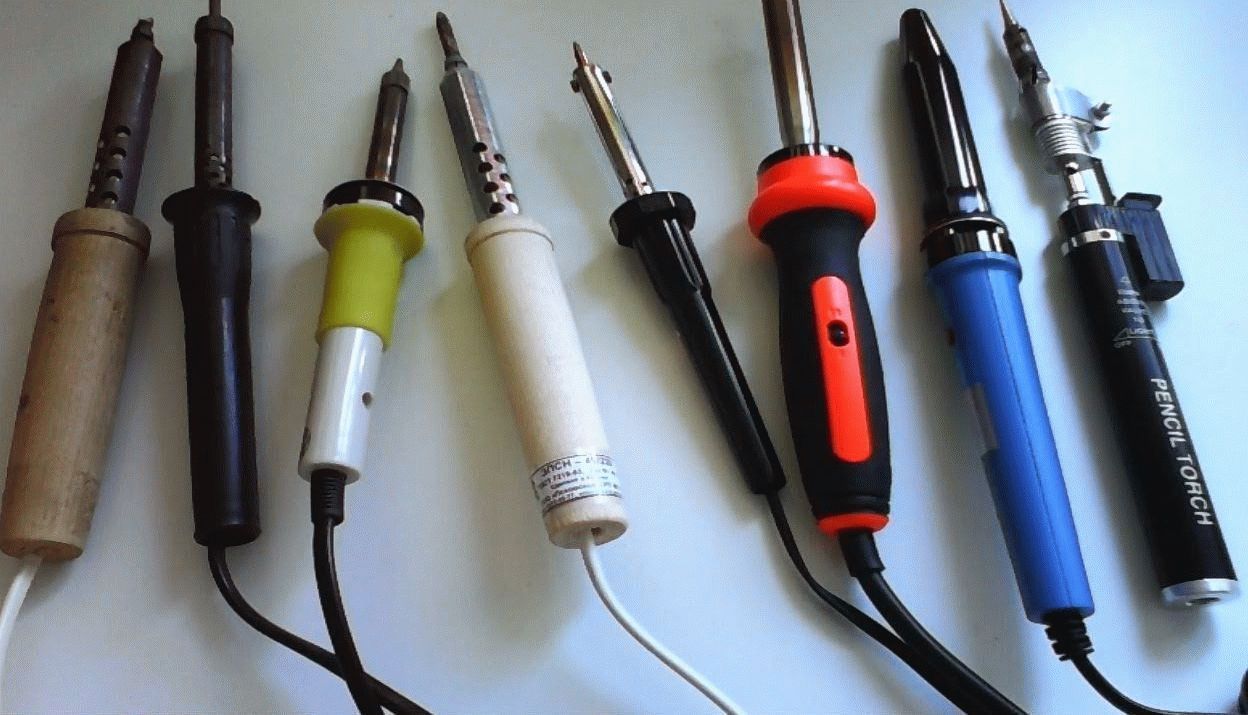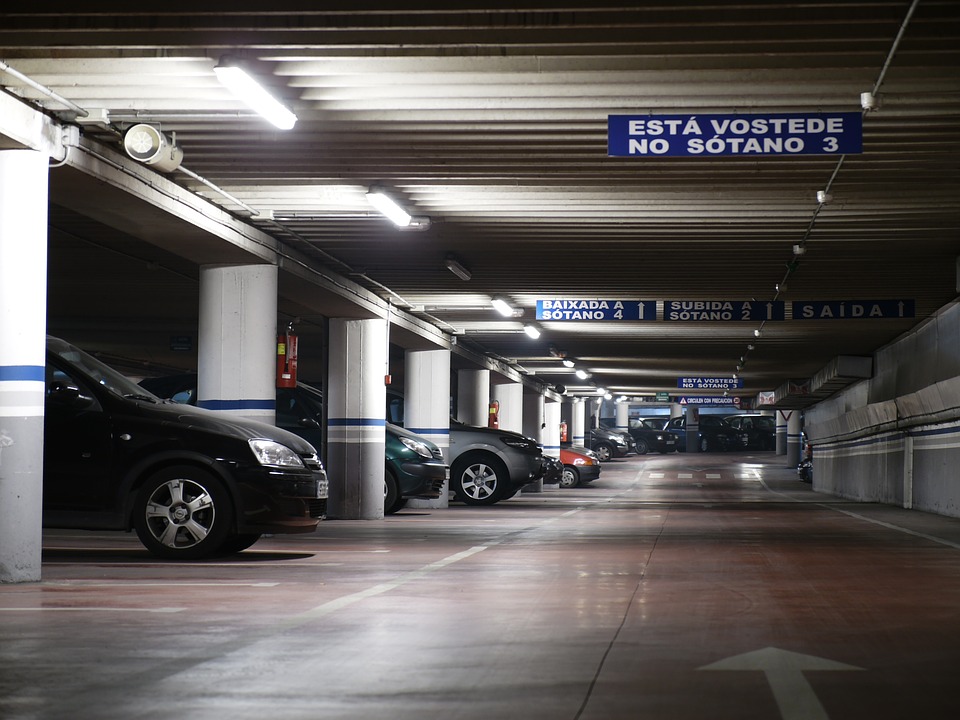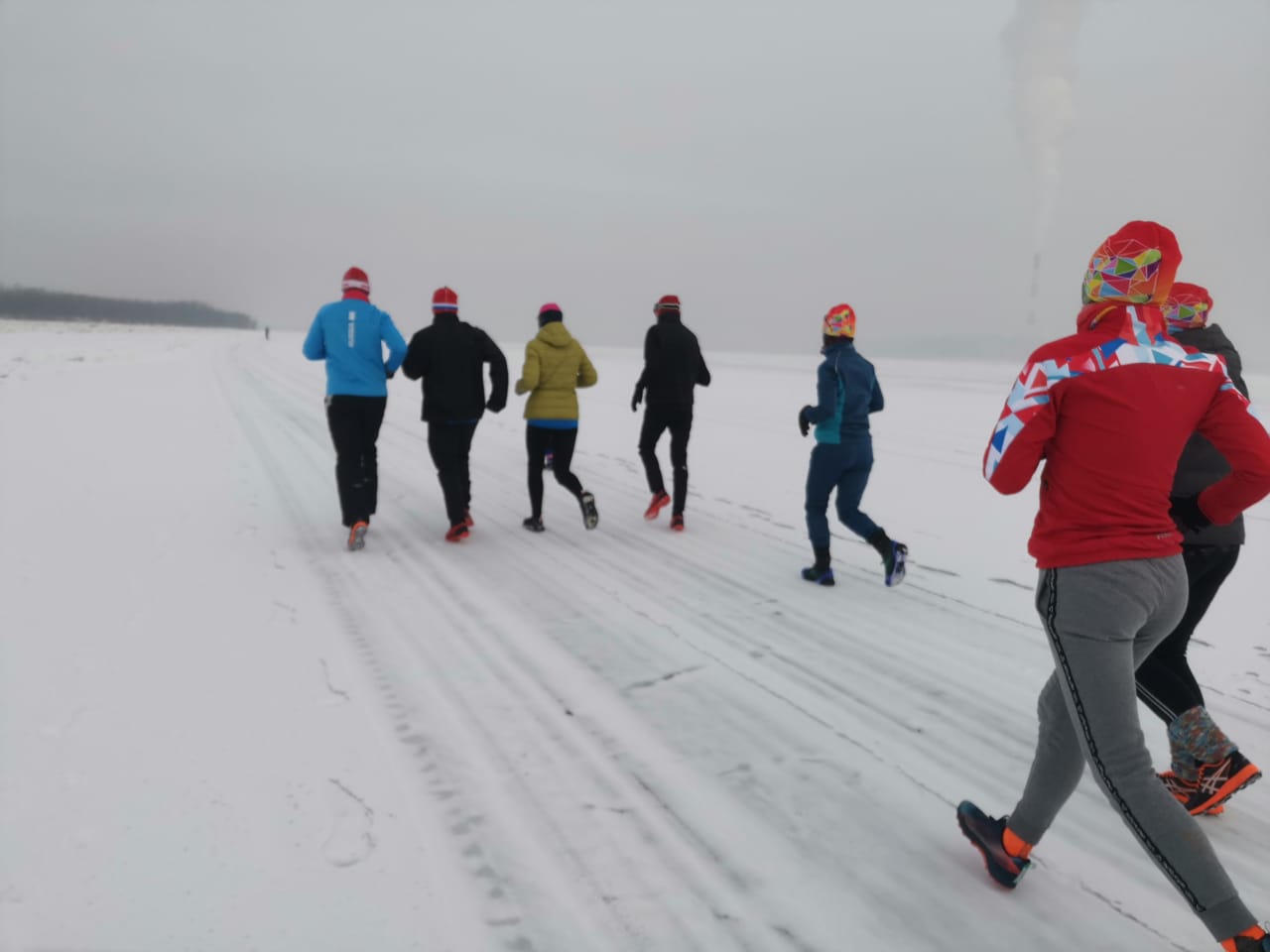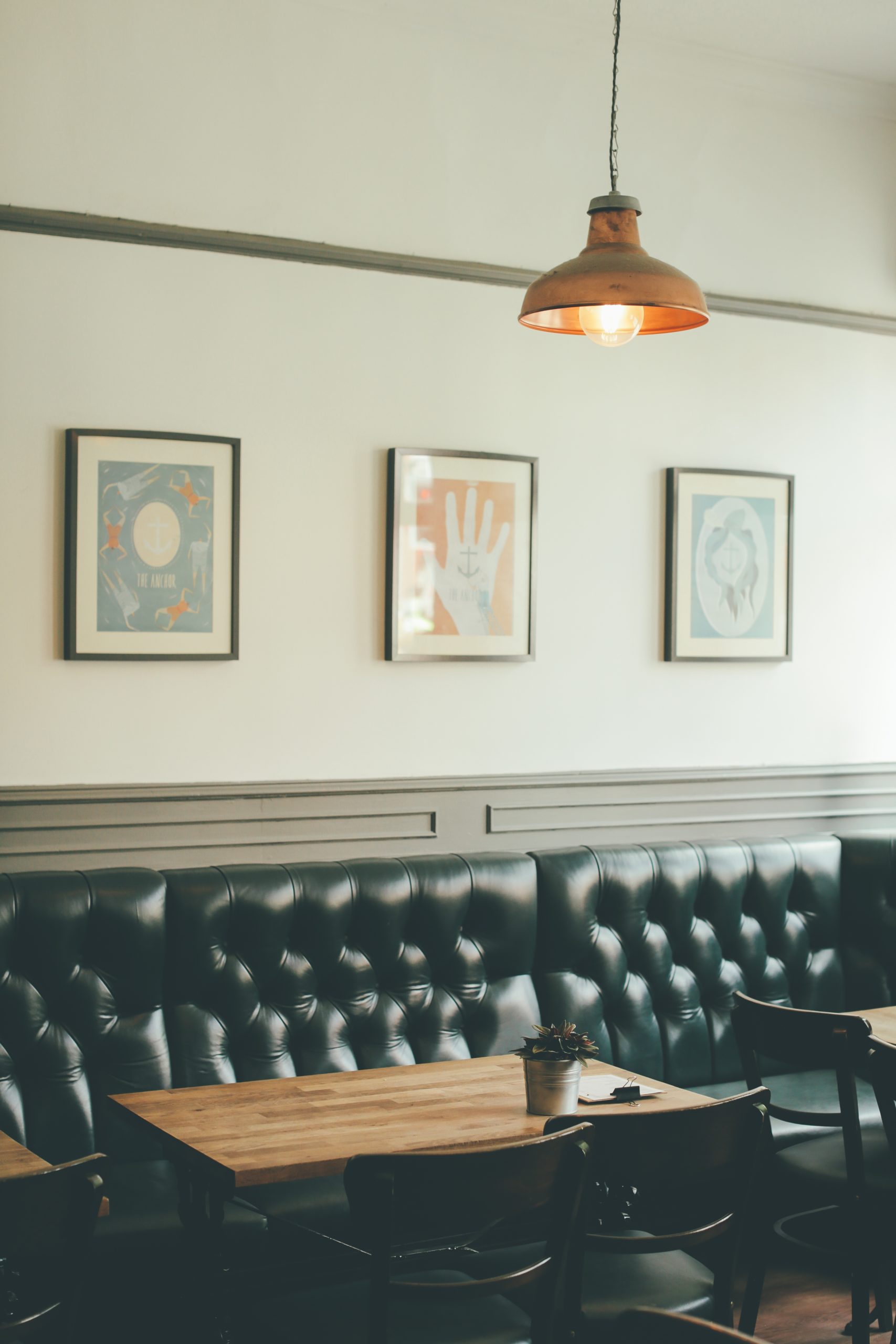Rating of the best monter holes and claws for 2022
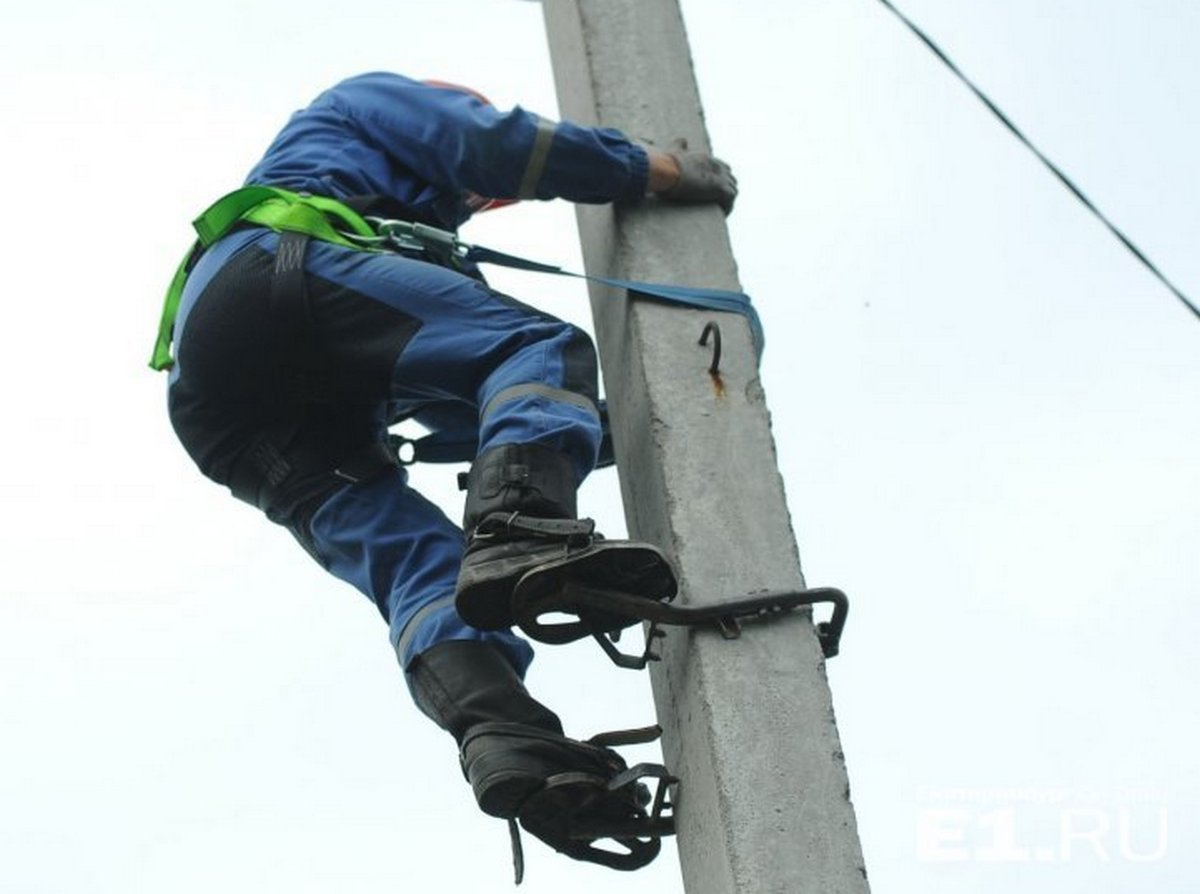
Monter's manholes and claws (they are also "cats") are special devices used by electricians and industrial climbers to climb wooden and reinforced concrete supports of various structures (for example, power lines). Currently, automatic towers or telescopic lifts can also be used for such lifts, but their use can result in sensitive financial costs, while for one-time work it is easier to use "cats". In addition, with the help of manholes and claws, it is very convenient to carry out work in confined spaces (technical well) or when bulky equipment does not have the opportunity to drive up to the work site.

Content
- 1 General information
- 2 Modern types of claws / manholes and their technical characteristics
- 3 Prevention and maintenance of high-altitude manholes and claws
- 4 Difficulties of choice
- 5 Rating of the best monter holes and claws for 2022
- 5.1 Lazy
- 5.1.1 4th place: "KRASNODARELECTRO" universal with spikes LU KVT "
- 5.1.2 3rd place: "KLM-2 Texenergo for supports SV105-3.6, SV105-5, reinforced concrete racks"
- 5.1.3 2nd place: "VIRAGE" universal LU type 1 "
- 5.1.4 1st place: "LU for trapezoidal reinforced concrete supports (with spikes) "KVT" 61192"
- 5.2 claws
- 5.1 Lazy
- 6 Conclusion
General information
The design of both types of devices under consideration is quite simple. It includes two steel bases, as well as coupling elements bent in a semicircle or at an angle, and spikes attached to these arcs. Through these spikes, the hitch with the support occurs when climbing up. The base is made in the form of a platform for the feet of the master, where they are fixed with straps for better retention. However, when climbing up the rack, claws / manholes alone will not be enough, since the entire mass of a person’s body cannot be held by them alone. Therefore, devices are used exclusively in tandem with a safety harness. Its function is to prevent falling if one of the cats slips. It is worth noting that claws and manholes are somewhat individual in nature and are intended to be used by a specific worker.
The principle of operation of the devices under consideration is that, under the influence of gravity, the platform with the master's foot slides down / up along the support, while turning slightly along its axis. The spiked arc at this time pierces the rack material or rests with a spiked end against steel or reinforced concrete. This is how the master's body is fixed at a certain height. Due to the fact that the spikes are made from hardened steel of a structural grade of at least “40” (GOST No. 4543 of 1981), the jamming of the spike in concrete or steel occurs without direct deformation of the spike itself. To increase the level of adhesion to the surface, both in the claws and in the manholes, the number of spikes on each arc should be at least three. Accordingly, the greater the weight of the body of the master, the more spikes the hook arch should have. Experts recommend considering only such products that are made of very hard alloys of the VK-30 or VK-25 grades.
The difference between claws and laz
Despite the fact that these devices are designed to perform the same function, and they are also somewhat similar visually, there are differences between them. First of all, it is the ability to climb a support of a certain diameter and made of a certain material:
- Fitters' claws - they are used exclusively on wooden poles, the shape of their arc is round, and the shape of the teeth is conical, and they are made of standard steel;
- The fitter's manholes - they are used on reinforced concrete pillars, their arc shape is rectangular, the tenon format is a triangular prism, and the material of manufacture is an alloy of increased strength.
Material for the manufacture of manholes and claws
Nowadays, wooden supports are almost never found, as they were replaced by more reliable and durable reinforced concrete structures. It is for this reason that universal manholes / claws began to appear. They are complemented by special carbide cutters designed to reduce the risk of slippage while reducing tool wear. The material of manufacture today has become almost uniform - these are hard alloys, and this is despite the fact that the current regulatory framework of GOST still allows the use of ordinary steel. But the manufacturers went even further and began, on their own initiative, to apply an anti-corrosion coating to the metal parts of the devices. Such innovations not only increase the strength of the product, but also give it greater durability. Straps for fixation are made on the basis of wear-resistant rawhide and yuft, and their firmware is carried out with high-strength nylon threads.
Modern types of claws / manholes and their technical characteristics
Today you can find on the market three main types of lifting devices in question:
- "Claws" - they are used on round wooden or metal supports;
- "Manholes" - they are used on concrete pillars of a round or trapezoidal shape;
- "Claws-holes" - are considered universal. They can be used both on concrete and on wood, as well as for them the shape of the support does not matter.
IMPORTANT! It should be noted that the first devices are practically not produced now, the second ones are widely used due to the excellent price-performance ratio, and the third ones, although they have all the characteristics of the previous two, but the price tag for them can be expensive.
Claws for working on wooden supports
Their production is technically regulated by GOST No. 14331 of 1977.There are three types in total:
- KM-1 - works on supports with a diameter of 140 to 245 millimeters, the opening of the arc should be 245 millimeters;
- KM-2 - works on supports with a diameter of 220 to 315 millimeters, the opening of the arc should be 315 millimeters;
- KM-1 - works on supports with a diameter of 310 to 415 millimeters, the opening of the arc should be 415 millimeters.
These claws are produced by a stamping operation, they have a perforated base, due to which the area of contact of the foot with the base increases, which at the same time reduces the level of body pressure on the platform. The base is made of metal and hardened to the level of "HRC 38-42". On each of the side surfaces there are lugs in which the arcs are fixed. On the remaining edges of the platform, small bumpers are installed, which are designed to eliminate the risk of accidental slipping of the foot. On the back side of the platform there are stiffening ribs, through which the entire structure is strengthened.
The arc locking part must rotate freely in the lugs in order to ensure the grip of the spikes with the surface during lifting. For arches, a small play of 15 degrees is allowed. The most worn part of this design is the spikes themselves, so the manufacturer supplies them with special conical tips. Still, solid carbide studs have a higher level of working strength, but they are extremely sensitive to bending loads and mechanical shocks. However, the spikes on the structure can always be changed, since they are mounted on a thread and are immediately provided as removable parts. To move on a tree, the back of the platform must also be equipped with spikes. Fastening of the fitter's leg to the device is carried out by belts.It is for cats that its upper part is made from yuft, and the lower part is made on the basis of rawhide, impregnated with animal fat. The stitching of all component belt parts is carried out with nylon so that it can easily withstand a load of up to 180 kilograms.
Manholes / claws (including universal ones) for working on reinforced concrete supports
These devices are designed specifically for operation in more severe climatic conditions, the boundaries of their operating temperature range from -40 to +50 degrees Celsius. They are also marked in a special way:
- "KMM" - for steel supports;
- "KLM" - for reinforced concrete supports;
- "LU" - universal.
After the letter marking, a digital designation of the technical capabilities of a particular tooling follows. This may be information about the possibility of working on power lines with a certain voltage (for example, from 35 to 110 kV), as well as the permissible load (for example, from 180 to 200 kilograms). In today's market, the most popular models are:
- "KMM ..." - work on round supports with a diameter of 126 to 150 millimeters, have a mouth of 136 millimeters, the maximum lifting step is 10 centimeters;
- “LU…” – work with any supports, have an arch opening from 168 to 190 millimeters, and are necessarily equipped with a belt that fixes the back of a person’s foot;
- "KLM-1 combined" - have a mouth of 168 millimeters, allow a lifting step of 16 centimeters;
- "KLM-2 combined" - have a mouth of 190 millimeters, allow a lifting step of 17 centimeters.
Particular attention should be paid to manholes, which are equipped with a worm adjustment mechanism to control the rise. Such equipment additionally has a support post, where the specified mechanism with a cable loop is located.When capturing the support with a loop, it becomes more convenient for a person to make step-like movements up / down, while alternately moving the center of gravity of the body from one manhole to another.
Additional insurance funds
These include:
- Mounting belt having a narrow or wide sash. It is on it that a safety chain sling or an iron cable is fixed.
- Safety helmet - it is needed to protect the master's head from accidental contact with wires or support structures.
- Protective gloves - they can be leather (for standard installation operations) or dielectric rubber (for electrical installation operations).
- Signal vest - it has a reflective coating that allows you to clearly recognize the master working at height.
Prevention and maintenance of high-altitude manholes and claws
Modern models of manholes and claws are universal devices, their operation is allowed at temperatures from -40 to +50 degrees Celsius, which means that they can be used both in the Far North and in the hot south. For any model, the expiration date is set by the manufacturer. Its countdown starts from the moment of the first application. Traditionally, such a period should not exceed 12 months of intensive use, after which the product must be disposed of or recycled. If the intensity of work of cats is at an average level, then their service life should not exceed 60 months, even if some components, for example, spikes, were replaced in a timely manner. If we talk about the warranty period, then its manufacturer usually sets it for 1 year.
Storage of devices is recommended to be carried out in a room with dry and sufficient ventilation at a temperature of -20 to +20 degrees Celsius.It is unacceptable to store equipment in the open, even if it has an anti-corrosion coating.
Also, self-repair of equipment is not recommended, with the exception of replacing the spikes. Any other violation of the integrity of the case entails the impossibility of further operation. Manholes and claws do not require special care after use: they can simply be cleaned of dirt, wiped dry and stored in the proper place.
- Planned inspections and tests.
Industrially used manholes and claws must be inspected and tested every 6 months to confirm serviceability and reliability. Before starting the load tests, an external inspection is carried out. It reveals the most significant deformations, and, if necessary, removable elements are replaced at this stage. Also, scheduled drying and cleaning of products is carried out.
- Visual inspection.
During this examination, the following is checked:
- Correct sharpening of spikes;
- Safety of connecting the arc element to the platform;
- Reliability of all seams on belts;
- Elasticity of clamping by a locking nut of a cotter pin of a lock ring.
- Load test of claws and manholes
Load tests are carried out immediately after the elimination of deficiencies detected by visual inspection. The essence of the test is to transfer static loads to the equipment. The device, which is installed in the working position on the simulation stand, receives a weight load in a weakened "section". The device should easily transfer the load for a duration of 5 minutes. At the same time, its main elements should not form severe deformations, breaks in the carrier base, damage to the lock buckle or connecting strap.Even after removing the load and restoring the shape, the product should not be damaged, which is fixed using the usual measurements of the magnitude of the lift and the opening of the device, both before the load is received and after it.
Difficulties of choice
Before buying studded equipment for high-altitude work, you should pay attention to some important nuances:
- Price - when buying equipment that affects the safety of an employee, you should not chase after a cheap price. Products that are clearly underpriced can be made from low-quality materials. Accordingly, it is better to choose models from the middle budget segment or premium class.
- Manufacturer - The brand reputation of the manufacturer of a product can say a lot. It is worth trusting only such brands that have proven themselves in the market for a long time and with high quality.
- Labeling and factory test report - labeling must fully correspond to the functionality of the product, and the results of its factory tests must be described in detail in the accompanying documents.
- Quality - all catchy elements, i.e. manholes and claws must be produced according to GOST standards, and the entire product must have an appropriate quality certificate. The elements simply must be free of defects, namely: the belt seams are absolutely even, their thickness is at least 30 millimeters, the lines on the belt are straight, with proper fastening.
- Additional information - both on the product itself and in the accompanying documents, there must be a trademark, batch number and release date.
Rating of the best monter holes and claws for 2022
Lazy
4th place: "KRASNODARELECTRO" universal with spikes LU KVT "
The model is used for climbing the trapezoidal reinforced concrete racks of power lines. It is designed for the type of supports SV - 95, 105, 110. The gap of the arc is from 168 to 190 millimeters, the maximum load is 180 kilograms per platform. Adjustment of a pharynx of an arc by means of rearrangement of a special insert is possible. The recommended cost for retail chains is 5500 rubles.
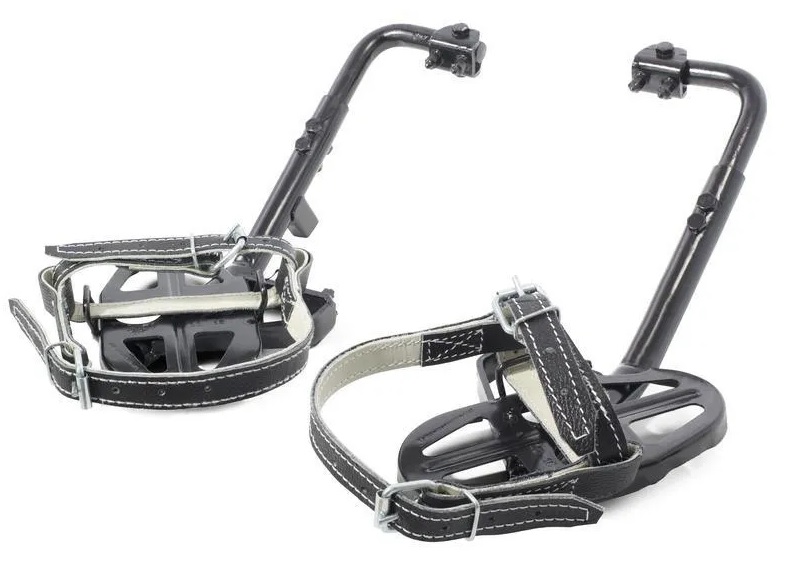
- Total weight - 5 kilograms;
- High strength leather straps are included.
- Not detected.
3rd place: "KLM-2 Texenergo for supports SV105-3.6, SV105-5, reinforced concrete racks"
The sample is used to move along the reinforced concrete supports of power lines. The spikes on the platform are made on the basis of U8A carbon steel and are equipped with hard-alloy inserts. The kit comes with a fourth strap designed to support the foot from the heel side, which provides a more rigid fixation. Designed for supports SV-105-3.6 and SV-105-5. The throat opening is 190 millimeters, the lifting step is 16.5 centimeters. The maximum weight for one platform is 180 kilograms. The recommended cost for retail chains is 5680 rubles.

- Operating temperatures from -40 to +50 degrees Celsius;
- Additional strap included;
- There is reinforcement with carbide inserts.
- Suitable only for supports of 2 types.
2nd place: "VIRAGE" universal LU type 1 "
This product is used for climbing reinforced concrete overhead power transmission poles. It can work on supports CBii0-ia, CB-95-1 (2a), CB-105-3.6, CB-105-5.There is an adjustment of the throat of the manhole, the spikes are made using the technology of carbide inserts. Fully comply with the technical specifications (TU) of production from 2010. Zev can open in the range from 160 to 190 millimeters, the total weight of the product is 4.5 kilograms. The recommended cost for retail chains is 5970 rubles.
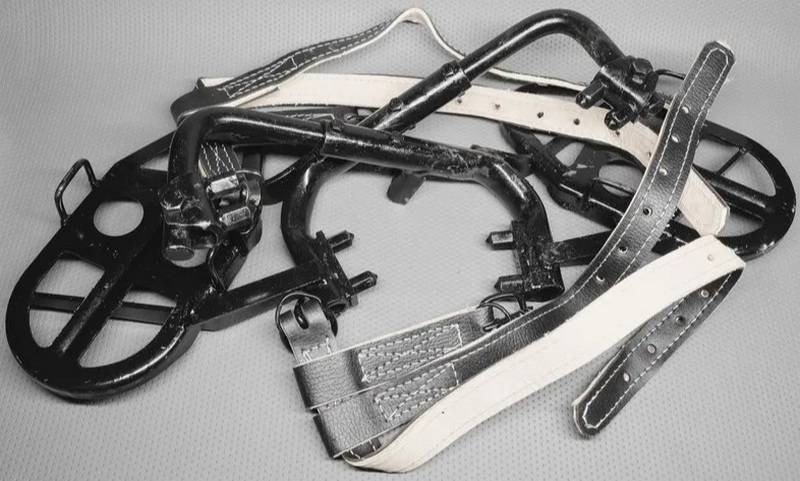
- Excellent value for money and quality;
- Ability to work with non-standard supports;
- Wide arch opening for girth.
- Not detected.
1st place: "LU for trapezoidal reinforced concrete supports (with spikes) "KVT" 61192"
The sample is considered an indispensable equipment for ensuring the safety of ascent and descent along the reinforced concrete racks of power lines. Structurally, it is a sliding structure equipped with fully carbide spikes. The kit includes footrests and a set of leather straps, which are designed to more securely fix the fitter's foot in the device. The throat opening can be adjusted in the range from 168 to 190 millimeters. The maximum load on each platform is 180 kilograms. The recommended cost for retail chains is 6600 rubles.

- Reliability and quality;
- Fully carbide spikes;
- Sufficient security.
- Somewhat overpriced.
claws
4th place: "Hammer 315 mm KM 2"
The model is used for ascent/descent along wooden and reinforced concrete "stepchildren" structures of power transmission lines, as well as on communication lines for maintenance and control of power plants. The set includes a fourth strap that supports the foot from the heel side.The claw opening is possible up to 315 millimeters, an error of 5 millimeters is allowed. Designed for poles with a diameter of 220 to 315 millimeters. The recommended cost for retail chains is 3390 rubles.

- Ability to work on combined supports;
- Good value for money;
- Wide claw opening.
- Not detected.
3rd place: "Monter's sickle-shaped claws" Zubr Kodiak "
The product is intended for installation and repair work. Fastening straps are made on the basis of genuine leather. The spikes have a cone-shaped sharpening and are made of factory-hardened tool steel. The tooling easily provides proper fixation when wrapping around the support. The overall dimensions of the crampons are 460*325 mm, the overall dimensions of the platform are 227*118 mm. The total number of spikes is 10 pieces. The recommended cost for retail chains is 4100 rubles.

- Shoe size - universal;
- Zev claw, maximum - 245 millimeters;
- Static load of at least 180 kilograms.
- Not detected.
2nd place: “PO ZMO” fitter's claws KM-2”
This sample has an extremely ergonomic design and is made of tool steel. The spikes are made of forged tool-type steel, which implies proper grip on the post, which completely ensures the safety of the master from accidental slipping. The total weight of the product does not exceed 3.6 kilograms, and this makes climbing quite comfortable. Designed to work with racks with a diameter of 140 to 245 millimeters, there is an additional expansion of functionality.The model necessarily passes not only standard factory tests, but also tests where work is close to extreme conditions (precipitation, temperature conditions, etc.). The product is characterized by a high level of security. The recommended cost for retail chains is 5500 rubles.

- Ability to work on different types of racks;
- Light weight;
- Wide opening of the throat of the claw.
- Not detected.
1st place: "Radiosphere" "Rural Electrician's Set #41"
A classic set for working on wooden poles, directly oriented to work in the countryside. The kit includes not only the claws themselves, but also working tools for electrical installation operations, and also includes the entire set of safety devices. The set comes in a standard molded canvas case. The recommended cost for retail chains is 6250 rubles.

- Complete set, the ability to start work immediately;
- Orientation to work with wooden poles;
- Intuitive use.
- Outdated design.
Conclusion
Fitters' manholes and claws are an essential tool for any high-altitude electrician. They provide not only the convenience of high-altitude operations, but are also designed to be responsible for the maximum safety of the employee. Their choice in the current Russian market is quite wide, so choosing a model that is suitable in terms of functionality and price will not be difficult.
new entries
Categories
Useful
Popular Articles
-

Top ranking of the best and cheapest scooters up to 50cc in 2022
Views: 131649 -

Rating of the best soundproofing materials for an apartment in 2022
Views: 127687 -

Rating of cheap analogues of expensive medicines for flu and colds for 2022
Views: 124516 -

The best men's sneakers in 2022
Views: 124030 -

The Best Complex Vitamins in 2022
Views: 121937 -

Top ranking of the best smartwatches 2022 - price-quality ratio
Views: 114978 -

The best paint for gray hair - top rating 2022
Views: 113393 -

Ranking of the best wood paints for interior work in 2022
Views: 110317 -

Rating of the best spinning reels in 2022
Views: 105326 -

Ranking of the best sex dolls for men for 2022
Views: 104362 -

Ranking of the best action cameras from China in 2022
Views: 102214 -

The most effective calcium preparations for adults and children in 2022
Views: 102009
